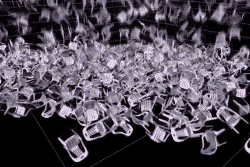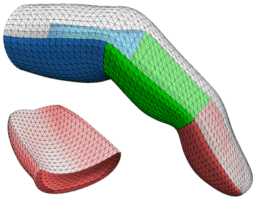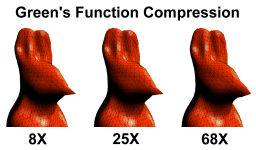 |
Dinesh K.
Pai, Kees van den Doel,
Doug L. James, Jochen Lang,John E. Lloyd, Joshua L. Richmond,
Som H. Yau, Scanning Physical Interaction Behavior of 3D
Objects, Proceedings of ACM SIGGRAPH 2001, pp. 87-96, 2001.
ABSTRACT:
We describe a system for constructing computer models of several
aspects of physical interaction behavior, by scanning the response of
real objects. The behaviors we can successfully scan and model include
deformation response, contact textures for interaction with
force-feedback, and contact sounds. The system we describe uses a
highly
automated robotic facility that can scan behavior models of whole
objects. We provide a comprehensive view of the modeling process,
including selection of model structure, measurement, estimation, and
rendering at interactive rates. The results are demonstrated with two
examples: a soft stuffed toy which has significant deformation
behavior,
and a hard clay pot which has significant contact textures and
sounds. The results described here make it possible to quickly
construct physical interaction models of objects for applications in
games, animation, and e-commerce.
PAPER
(pdf, 1.5MB)
VIDEO
(mpg, 16MB)
Defo Demo Events:
- Precarn-IRIS Annual Conference on
Intelligent Systems, Ottawa, June 4-5, 2001. (best demo)
- IEEE Intl. Conference on
Computer Vision, Vancouver, July 9-12, 2001.
COMMENT:
Green's function descriptions of linear elastostatic models are
inherently well suited to reality-based modeling. Using the UBC Active
Measurement Facility (ACME) we have
robotically automated the acquisition of real deformable models by
directly measuring quantities related to Green's functions (see Jochen Lang's Ph.D.
thesis). Once reconstructed, the models may be interactived with using
fast Green's function simulation techniques. For this team project, I
also worked on the reconstruction of textured multiresolution meshes
from range data, and subsequent rendering of deformations using
textured
displaced subdivision surfaces.
|


























